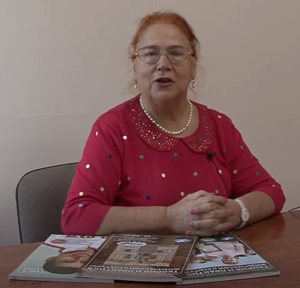Stretching and basic aerobics with health orientations for older women
ˑ:
PhD, Associate Professor E.D. Mitusova1
PhD, Associate Professor A.V. Shukaeva2
Dr. Hab., Professor I.A. Grets2
1State University of Humanities and Social Studies, Moscow Region, Kolomna
2Smolensk State University of Sports, Smolensk
Keywords: physical education and wellness classes, basic aerobics, stretching, the second mature age.
Introduction. New directions of motor activity of men and women of mature age (Pilates, yoga, aqua aerobics, stretching, breathing exercises, tai bo) allow you to be active and athletic, critically evaluate yourself physically and socially. One of these additional areas is basic aerobics and stretching [1]. Insufficient joint mobility limits the level of muscle strength, adversely affects speed and coordination skills, reduces work efficiency and is often the cause of ligament and muscle damage [2].
The purpose of the study is to determine the effectiveness of the use of basic aerobics and stretching on the health of mature women.
Methodology and organization of the study. The pedagogical experiment was conducted on the basis of the Kolomna Skating Center. In the preparatory part, an important feature of the classes was a typical warm-up in the form of Low Impact, which includes steps combined into a simple motor system in which one leg remains in contact with the floor surface all the time. Performing the steps: Step Knee Lift-Hip Twist-Step Knee Lift, Basic Step Over in Block 2 and actions: Jazz Square Around the Board; Reverse Turn; Repeat – 3 Knee Lift Around the Corner in block 2 is performed slowly, finishing taking steps on step platforms. In the main part, the students performed ligaments consisting of elements of basic aerobics related to performing exercises on the upper shoulder girdle and jumping with fitness elastic bands.
The results of the study and their discussion. At the end of the pedagogical experiment, the total body weight decreased in the experimental group from 62.1 to 59.4 kg (p<0.05), in the control group from 63.3 to 62.5 kg (p>0.05). The most noticeable improvement was recorded during the Romberg test: in the experimental group – from 34.6 to 47.5% (p<0.05), in the control group – from 33.6 to 38.5% (p>0.05); spinal column mobility: in the experimental group – from 7.9 to 15.2% (p<0.05), in the control group – from 7.6 to 10.2% (p>0.05). In the shoulder joint mobility test using stretch tape, in the control group at the initial stage of the study, the average result was 90.0 cm, which corresponds to a lower than average level of preparedness. The participants of the experimental group showed an average result of 82.9 cm, which corresponds to an above average level of preparedness. In the shoulder joint mobility test using a stretch tape, significant differences (p<0.05) in the results were revealed in the subjects of the control and experimental groups.
Conclusion. The means of basic aerobics that improve the physical and emotional state of mature women have been identified. The use of these tools ensures the adjustment, diversity and variability of the content of classes, the creation of new motives, motor needs, contributes to changing the methods of traditional physical education and recreation classes, help in the formation of motor skills.
Literature
- Mitusova, E.D., & Shvets, G.V. (2019). Use of the "Bosu Pro" half-sphere in health-improving aerobics classes at a university. Teoriya i praktika fizicheskoy kul'tury, (12), 64–66.
- Mitusova, E.D., & Polunina, T.I. (2019). Interaction of general education institutions, sports schools, and universities in the system of sports education in physical training. Physical Culture: Education, Training, and Sports, (1), 14–15.



